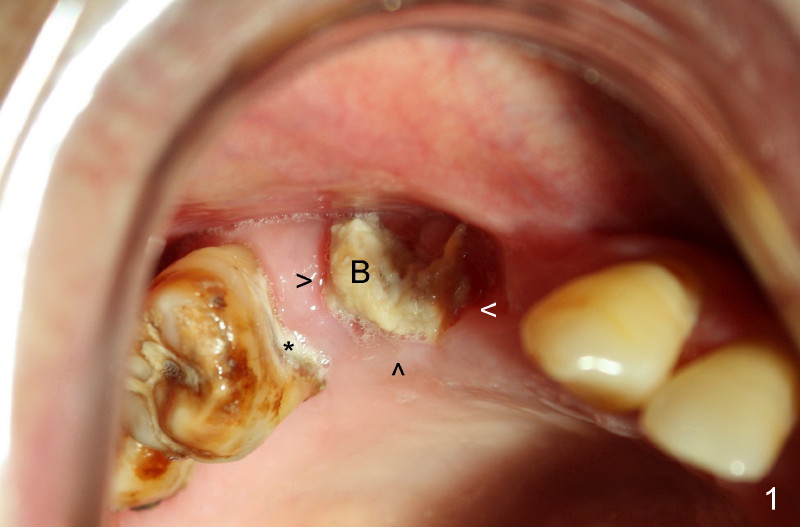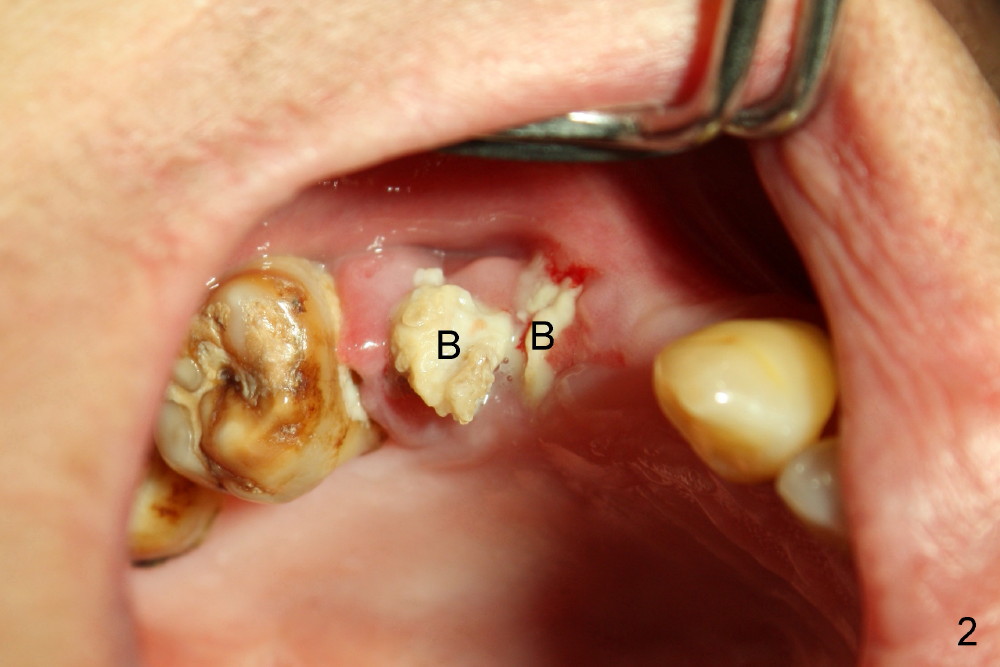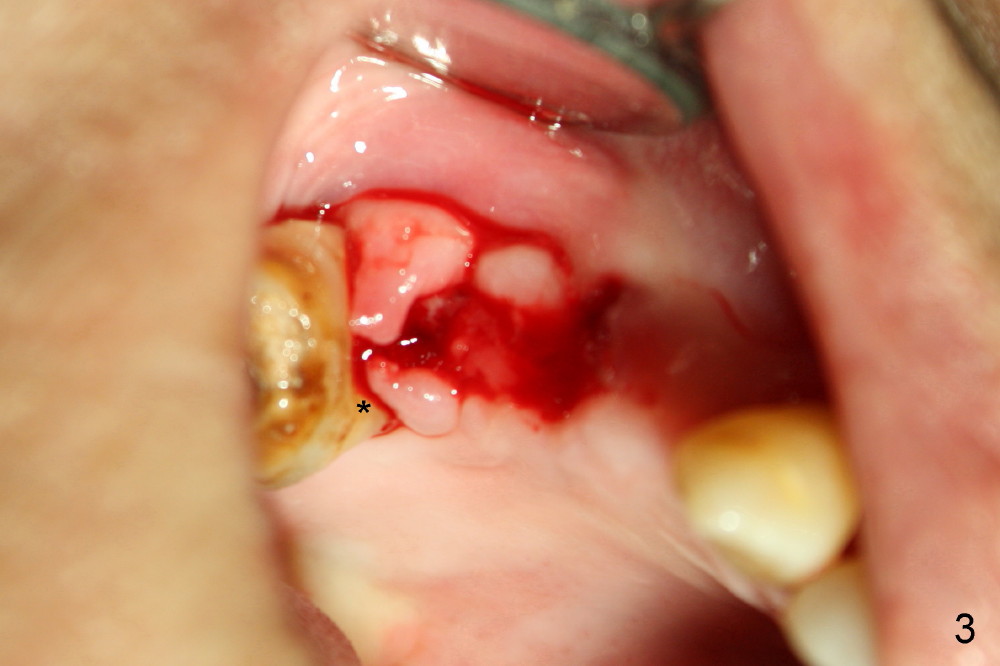


 |
 |
 |
Jaw Bone from Dying to Dead
Osteoporosis is quite common among Chinese ladies, probably because they are small in stature and they do not like to do exercises. Osteoporosis is treated by a group of medicines called Bisphosphonates. The most often used medicine is called Fosamax. Paradoxically, the medicines can cause jaw bone to be dying. Dead bone may be spontaneously exposed to oral cavity, probably due to friction of our daily oral activities, such as eating and brushing. More often dead bone is exposed after extraction. The dead bone (B in Fig.1) is yellowish. After extraction, normal living bone is quickly covered by growing gums. But this does not happen to dying bone. The gums (arrowheads) do not grow over the dying bone. It may be painful or not. Dying bone occurs more often when an osteoporosis drug is administered by intravenous injection.
Prevention of dying bone is best accompanied by good oral hygiene. If we do not have cavities (Fig.1 *) or gum diseases, we do not need extraction. We should try conservative ways to save the teeth when they are not so good.
Stop taking the medicines may not stop the process of bone dying. Once it is initiated, it appears to keep going on. Please consult your physician before stopping taking these medicines.
When the exposed bone is dead, and breaking down (Fig.2B), it becomes painful. It needs surgical removal under local anesthesia (Fig.3). Bleeding is induced to facilitate wound healing. Local dental cleaning is also done: there is no plaque around the root of the neighboring tooth (Fig.3 *, as compared to Fig.1,2). As expected, the patient does not have pain after dead bone removal.
Xin Wei, DDS, PhD, MS 1st edition 04/22/2012, last revision 01/20/2013